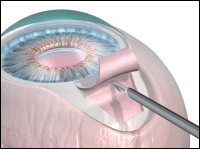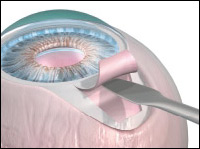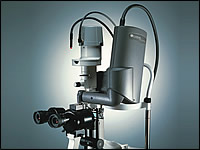Glaucoma Surgery
Depending on the type and severity of your glaucoma case, we may suggest various treatment options. At DEI, we focus on Glaucoma surgery options. Many glaucoma patients start with eye drop medications so you should consult with a qualified ophthalmologist regarding your unique situation.
Types of Glaucoma Surgery at DEI
Trabeculectomy
Trabeculectomy is a surgical procedure performed by an ophthalmologist used to lower eye pressure. By trying to lower the eye, pressure damage can be halted from further pressure increases but that damage already done is not reversible. The trabeculectomy procedure involves the surgeon creating a tiny passageway from the inside to the outside of your eye. This helps fluid to drain better from the areas it is presently not draining. A trabeculectomy can lower the pressure in your eye and help prevent more damage to the optic nerve. Trabeculectomy is more commonly used after other treatment options have not been successful or are simply not stopping the increasing IOP. (Intraocular Pressure)
ExPress Shunt for Glaucoma
One of the latest developments in the treatment of glaucoma is the use of the Express Shunt. The ExPress mini-glaucoma shunt a miniature stainless steel device that offers an additional option when treating difficult glaucoma cases. The shunt is as small as a grain of rice and is a hollow drainage tube that enables the drainage system of the eye, which has been damaged by glaucoma, to be bypassed, in turn lowering intraocular pressure in the eye. Generally, when medical and laser therapy for glaucoma fails, some type of filtration surgery is the next step taken. The ExPressshunt provides immediate, consistent aqueous flow through a microscopic opening.
To place the shunt, a thin flap is cut into the front of the eye. Next, a hollow needle is inserted through the eye, into the anterior chamber. Then, the ExPress shunt is placed into the hole created by the needle. Once the shunt is in place, the flap is closed and secured with tiny sutures. Fluid can then freely flow out of the eye, equalizing pressure within the eye. The procedure takes about 10 minutes to perform and is an outpatient procedure, meaning the patient will return home the day of surgery. After surgery, quality of life is greatly improved as patients have minimal pain and discomfort and are able to see well after surgery. With traditional surgeries to treat glaucoma, healing time can take weeks. Placement if the Express shunt causes less disruption to the eye tissue, so patients are much less likely to experience problems associated with standard surgery such as drooping of the eyelids. In many cases, patients that have had ExPress Shunt surgery are able to cut down or even eliminate medications, and eye drops to control intraocular pressure.


Selective Laser Trabeculoplasty (SLT)
In Selective Laser Trabeculoplasty (SLT) laser energy is delivered to the drainage system of the eye, the trabecular meshwork. This treatment is extremely safe and is well tolerated by patients. The SLT technique is very gentle, and studies show that it does not damage the tissue of the drainage system. This glaucoma treatment takes only minutes to apply, and there is usually no discomfort felt by the patient. Following the laser treatment, one usually continues any existing glaucoma drops. After several weeks a follow-up appointment will be required to evaluate the intraocular pressure. We will then determine how successful the procedure has been.

